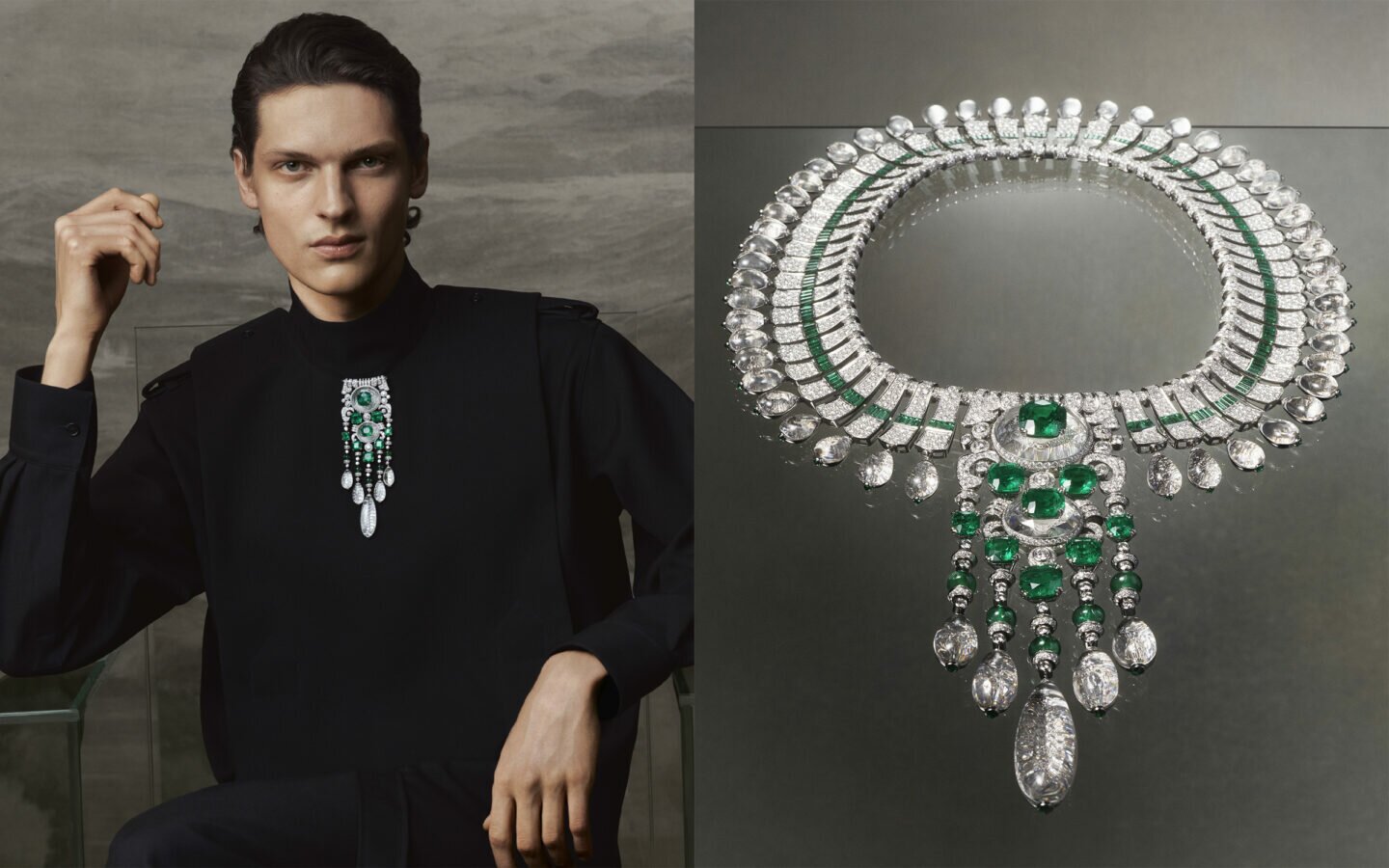It was the summer of 1928, a time of consumerism, decadence and excess. Bhupindar Singh, the maharajah of Patiala, waltzed into Paris with a 60-strong entourage and iron trunks brimming with gemstones. Every jeweller in the city knew of his extravagant taste for jewels and was eager to have a private audience with him. Who did he choose? Boucheron.
“It is the stuff of dreams,” says creative director Claire Choisne. “Louis Boucheron and his staff opened the trunks and found thousands of white, yellow and bluish diamonds, emeralds, rubies and grey pearls, amounting to more than 8,000 cts,” she says.
Some 149 pieces were commissioned that day, comprising spectacular parures that remain the most opulent jewellery ever created by the house.
“There were around 40 spectacular necklaces, bazubands and aigrettes that he ordered for himself, as well as a hundred or so more modest pieces for the maharani and his other wives and friends. His brief was to the point: respect traditional Indian forms while integrating Art Deco trends,” she says.
Fast forward to the present and Choisne has kept to the same directive for her new oeuvre, New Maharajahs. Only this time, she has suffused the jewellery designs with a distinctly modern air. The result of 18 months of work, it comprises 14 outstanding high jewellery pieces that were directly inspired by the maharajah’s commissions. “Back then, high jewellery was a demonstration of power. I wanted to transform these pieces without compromising on their original design and essence, so that today’s men and women will wear them as statements of style and not as symbols of power,” she explains.
Composed of five sets — New Maharajah, New Maharani, New Padma, New Churiyans and New Sarpech — they are largely made up of white diamonds, pearls and rock crystal. “Rock crystal remains one of my favourite materials to work with. I like how it resonates with the history of the maison since founder Frédéric Boucheron was the first to use this material on high jewellery. On a personal level, I love its transparency and how it brings a visual lightness to the pieces,” she says. Rock crystal is also significant to Indian culture, often used in ceremonial objects and inlaid with gold threads and precious stones.
India has inspired Boucheron since the 1870s. Archives reveal cuff bracelet sketches by Frédéric Boucheron decorated with boteh, also known as the paisley motif, an Indian symbol representing renewal, love and eternal life. More recently, in 2015, Boucheron unveiled Bleu de Jodhpur, a high jewellery collection made under the patronage of the maharajah of Marwar-Jodhpur. It featured pieces made with sand from Thar desert as well as Makrana marble, similar to those used in the Taj Mahal.
In the New Maharajahs collection, the boteh motif is found in the New Sarpech hair jewel, Choisne’s modern tribute to the aigrette that can also be worn as a brooch. Lotus flowers, another prominent Indian symbol, can also be found throughout the collection carved onto rock crystal and mother of pearl.
Keeping in line with the collection’s theme, some of the pieces have taken on traditional Indian jewellery names. The sarpech, for example, is a turban ornament worn by Hindu noblemen and princes. In New Churiyans, Choisne has reinterpreted churiyan bangles (worn by Indian women after marriage) into a stack of 10 white gold bangles adorned with diamonds, pearls and mother-of-pearl. They are presented with a wooden bobbin inlaid with mother-of-pearl, a nod to the maison’s heritage of beautiful objets d’art.
As for the collection’s pièce de resistance, it would have to be the New Maharajah necklace, adorned with nine Colombian emeralds totalling 38.73 cts. It is also one of the most challenging to produce because of how notoriously fragile emeralds are. “This is the only colourful parure of the collection. It tells the story of the maharajah of Patiala’s commission, but without the weight of history,” says Choisne. Rock crystal, in place of emeralds, now fringe the tips of this collier.
Among the 14 pieces, eight are designed to be transformable, perpetuating the multi-wear aesthetic Boucheron is known for. The collection is also conceived for both men and women, reflecting the brand’s progressive approach. “High jewellery shouldn’t just be for women. Historically, maharajahs and kings wore them. Therefore, it is quite natural for us to design high jewellery for men. Jewellery [should not be] about gender; it’s about style,” says Choisne.




